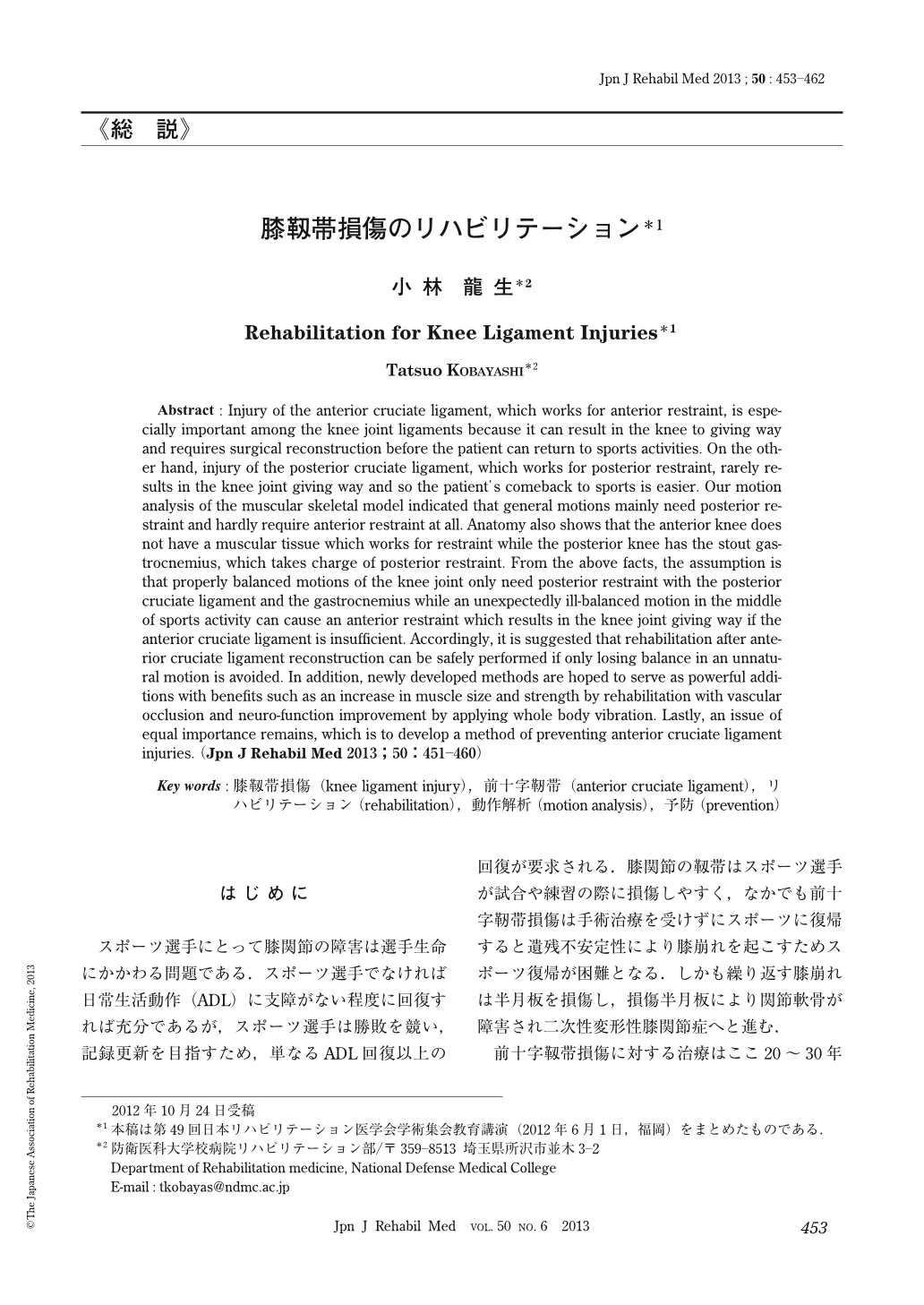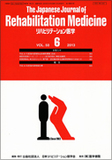Japanese
English
- 販売していません
- Abstract 文献概要
- 1ページ目 Look Inside
- 参考文献 Reference
はじめに
スポーツ選手にとって膝関節の障害は選手生命にかかわる問題である.スポーツ選手でなければ日常生活動作(ADL)に支障がない程度に回復すれば充分であるが,スポーツ選手は勝敗を競い,記録更新を目指すため,単なるADL回復以上の回復が要求される.膝関節の靱帯はスポーツ選手が試合や練習の際に損傷しやすく,なかでも前十字靭帯損傷は手術治療を受けずにスポーツに復帰すると遺残不安定性により膝崩れを起こすためスポーツ復帰が困難となる.しかも繰り返す膝崩れは半月板を損傷し,損傷半月板により関節軟骨が障害され二次性変形性膝関節症へと進む.
前十字靱帯損傷に対する治療はここ20~30年の進歩により安定した治療成績が得られるようになってきた.さらに前十字靱帯損傷を未然に防ぐために前十字靱帯損傷に対する危険肢位の啓発や予防トレーニングの普及など予防面での関心も高まりつつある.本論文では誌面の都合もあり,膝靱帯損傷の中で臨床的に特に重要な前十字靭帯損傷を中心に私見を含め解説する.
Abstract : Injury of the anterior cruciate ligament, which works for anterior restraint, is especially important among the knee joint ligaments because it can result in the knee to giving way and requires surgical reconstruction before the patient can return to sports activities. On the other hand, injury of the posterior cruciate ligament, which works for posterior restraint, rarely results in the knee joint giving way and so the patient's comeback to sports is easier. Our motion analysis of the muscular skeletal model indicated that general motions mainly need posterior restraint and hardly require anterior restraint at all. Anatomy also shows that the anterior knee does not have a muscular tissue which works for restraint while the posterior knee has the stout gastrocnemius, which takes charge of posterior restraint. From the above facts, the assumption is that properly balanced motions of the knee joint only need posterior restraint with the posterior cruciate ligament and the gastrocnemius while an unexpectedly ill-balanced motion in the middle of sports activity can cause an anterior restraint which results in the knee joint giving way if the anterior cruciate ligament is insufficient. Accordingly, it is suggested that rehabilitation after anterior cruciate ligament reconstruction can be safely performed if only losing balance in an unnatural motion is avoided. In addition, newly developed methods are hoped to serve as powerful additions with benefits such as an increase in muscle size and strength by rehabilitation with vascular occlusion and neuro-function improvement by applying whole body vibration. Lastly, an issue of equal importance remains, which is to develop a method of preventing anterior cruciate ligament injuries.

Copyright © 2013, The Japanese Association of Rehabilitation Medicine. All rights reserved.


